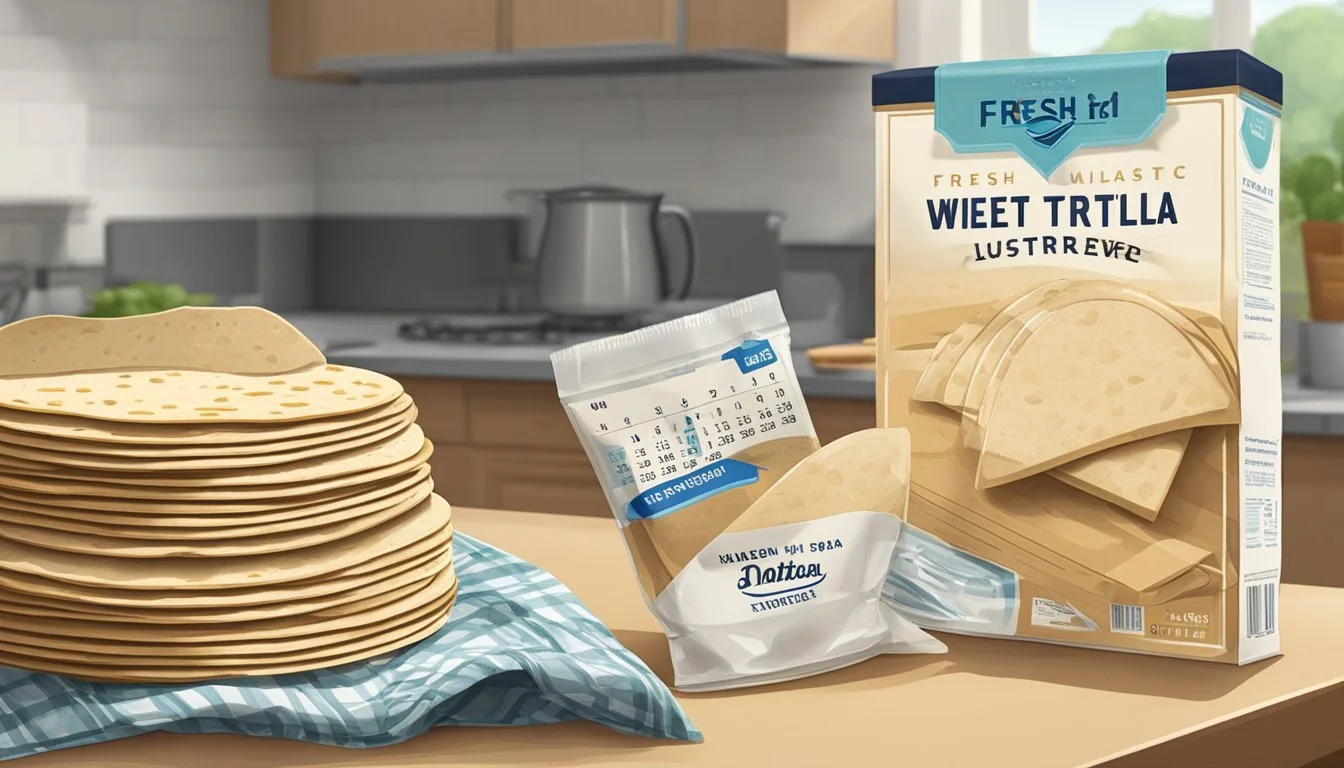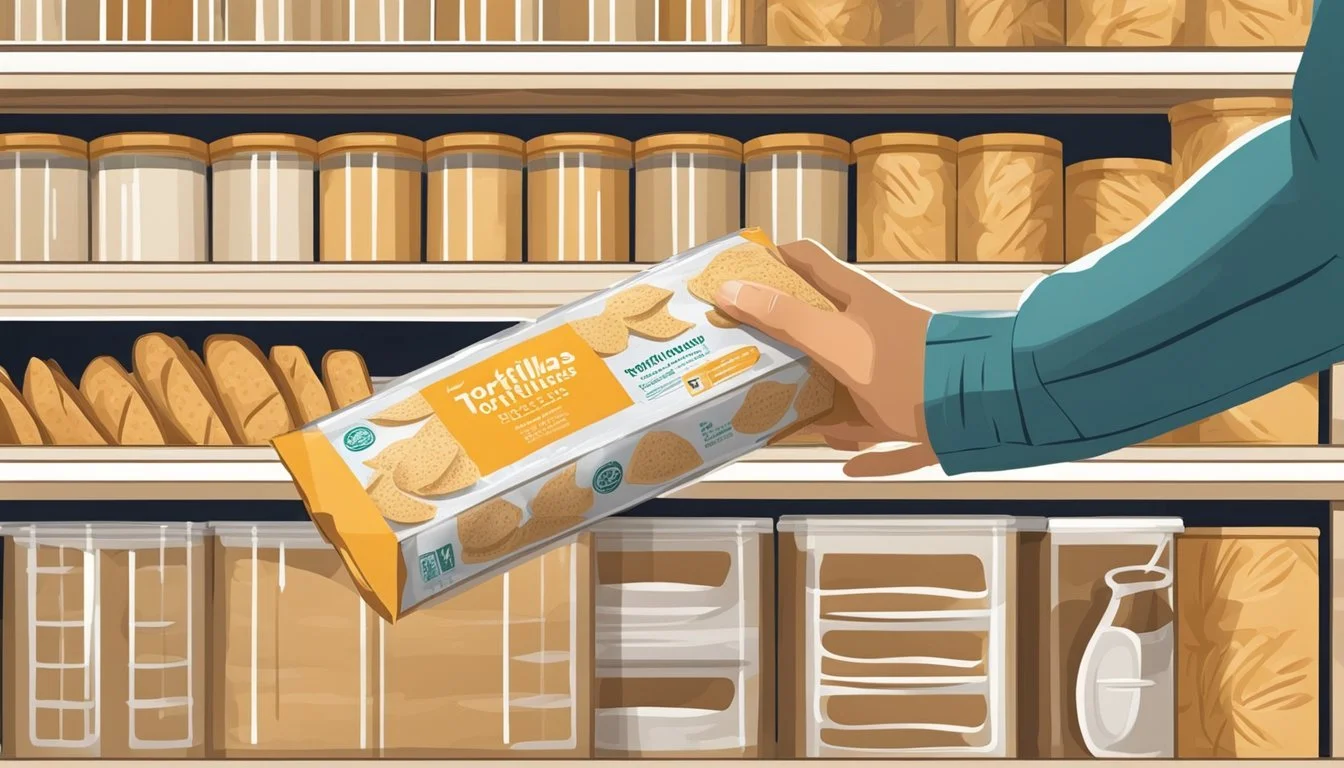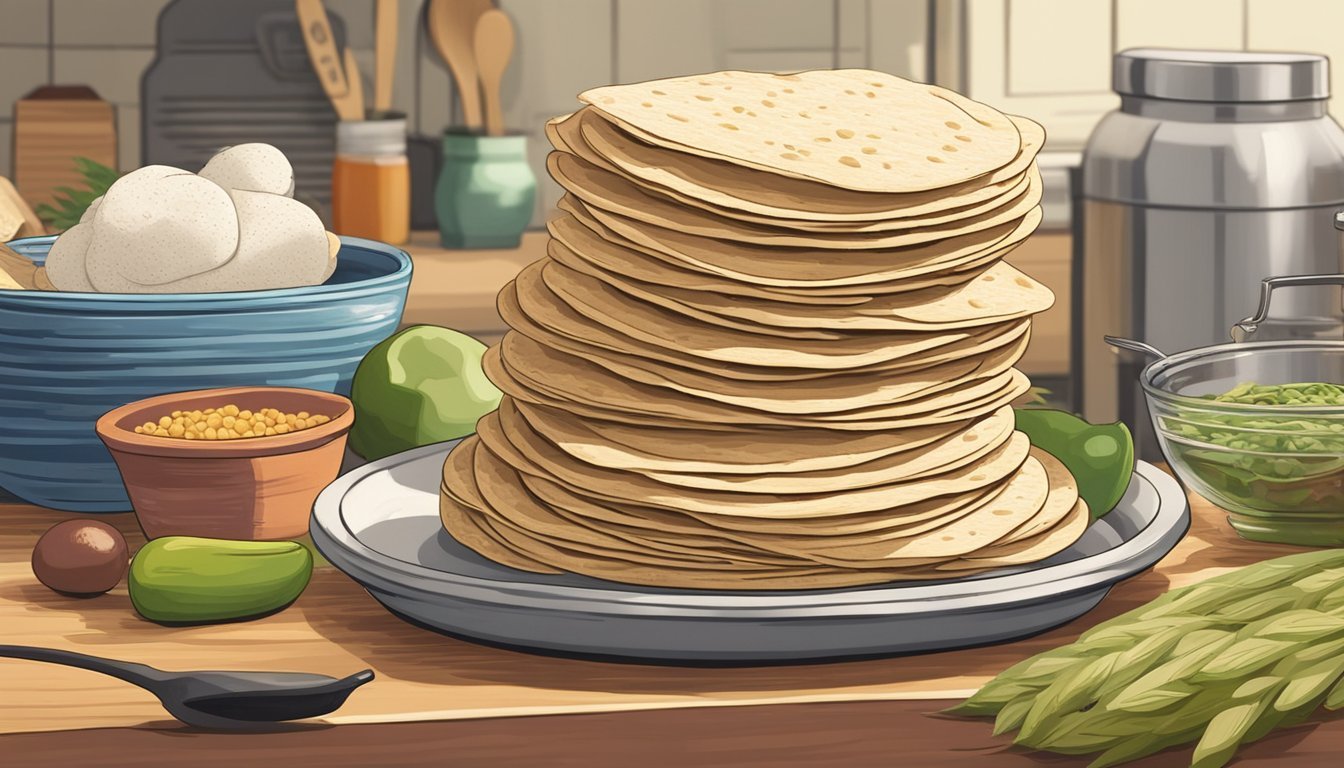How Long Do Wheat Tortillas Last?
Shelf Life and Storage Tips
Tortillas, a staple in many cuisines, particularly in Mexican and Central American dishes, come in various forms, including the popular wheat tortilla. Wheat tortillas (how long do wheat tortillas last?) are favored for their versatility and slightly nutty flavor, making them an excellent base for a multitude of recipes. Understanding the shelf life of wheat tortillas is essential for both food safety and maintaining their quality. Typically, store-bought wheat tortillas contain preservatives that extend their shelf life, allowing them to last beyond their 'best by' dates if stored properly.
The longevity of wheat tortillas is influenced by several factors including storage conditions and whether the package has been opened. In an unopened package, wheat tortillas can last for about one week past the printed date when stored at room temperature, and even longer if kept in the refrigerator. Once opened, it's important to reseal the package or transfer the tortillas to an airtight container to maintain freshness and prevent them from drying out or developing mold.
Food safety is a key consideration when consuming wheat tortillas. While they may remain edible beyond the 'best by' date, the quality may deteriorate. Signs of spoilage such as an off smell, a change in texture, or visible mold mean that the tortillas should be discarded. By assessing these factors, consumers can ensure they are enjoying wheat tortillas at their best and avoid unnecessary waste.
Understanding Tortillas
Tortillas are a versatile and widely consumed flatbread, pivotal in many culinary traditions. Their longevity hinges on the type and ingredients used.
Types of Tortillas
Tortillas are traditionally categorized by their primary ingredient. Corn tortillas, made from ground corn or cornmeal, are known for their robust flavor and form an essential part of Mexican cuisine. Flour tortillas typically consist of wheat flour and have a softer texture, making them suitable for wraps and burritos. Spinach tortillas, often green in color, incorporate spinach for an added nutritional profile and a distinct taste. Another variant, whole wheat tortillas, are made with whole wheat flour (how long does whole wheat flour last?), offering a healthier alternative with more fiber and nutrients compared to those made with refined flour.
Wheat Flour in Tortillas
Wheat flour stands as the foundation for both flour tortillas and whole wheat tortillas. The differences between them lie in the type of wheat flour used. For standard flour tortillas, refined wheat flour is used, which provides a mild taste and a soft texture that's favored in various dishes. Whole wheat tortillas are made with whole grain wheat flour, preserving more of the natural nutrients found in the grain, such as fiber. These tortillas have a heartier taste and a denser structure, which some consumers prefer for its purported health benefits.
Shelf Life Fundamentals
Understanding the shelf life of wheat tortillas is crucial for maintaining their freshness and edibility. The labels on tortilla packaging provide consumers with essential information regarding how long they can expect tortillas to remain fresh and safe to consume.
Expiration Date vs Best-By Date
It is important to distinguish between expiration dates and best-by dates when assessing tortilla shelf life. An expiration date indicates the last day the product is considered safe to consume, while a best-by date suggests when the product is no longer at its peak quality but may still be eaten. Wheat tortillas typically display a best-by date, and consumers can still enjoy them for a short period after this date, assuming they are stored properly.
Preservatives and Tortilla Freshness
The role of preservatives in maintaining the freshness of wheat tortillas cannot be understated. Preservatives help extend shelf life by preventing the growth of mold and bacteria. Tortillas with a higher concentration of preservatives may last longer than those without. However, for consumers preferring preservative-free options, shelf life might be shorter, and proper storage becomes more critical to prevent spoilage.
Storing Tortillas
Proper storage is essential to prolong the shelf life of wheat tortillas and maintain their quality. Whether at room temperature, refrigerated, or frozen, each method requires attention to factors such as humidity and airtight packaging to prevent spoilage.
At Room Temperature
Wheat tortillas can be stored in the pantry at room temperature. This is suitable when they will be consumed within a relatively short period. They should be kept in an air-tight container or sealed in the original plastic bag to prevent exposure to moisture and to maintain freshness. Typically, they can last up to 7-10 days in such conditions.
Temperature: Ideal is about 68°F (20°C).
Containers: Use resealable plastic bags or airtight containers.
Refrigerating Tortillas
To extend their shelf life, wheat tortillas can be refrigerated. In this cooler environment, they can maintain quality for up to 4 weeks. When refrigerating, tortillas should be wrapped in aluminum foil or plastic wrap to protect them from drying out due to the fridge's low humidity.
Temperature: Maintain at 40°F (4°C) or below.
Packaging: Place tortillas in a plastic bag or wrap them in foil before refrigerating.
Freezing Tortillas
For long-term storage, wheat tortillas can be frozen, which significantly extends their shelf life to 2 months. It's important to wrap the tortillas in wax paper to prevent them from sticking together and then place them in a freezer bag to guard against freezer burn.
Temperature: The freezer should be at 0°F (-18°C).
Preparation: Separate tortillas with wax paper, and store in freezer bags.
By following these storage guidelines, one can ensure that wheat tortillas remain fresh and prevent unnecessary waste due to spoilage.
Food Safety Concerns
When it comes to wheat tortillas, food safety is paramount to prevent illness. This section addresses how to identify spoiled tortillas and discusses the risks associated with consuming tortillas that have turned bad.
Identifying Spoiled Tortillas
Mold: One should look for visible signs of mold, which typically manifest as green or black spots. Mold growth indicates spoilage and the tortillas should not be consumed.
Odor and Discoloration: Bad tortillas often emit an off-putting smell and may show discoloration. A sour or strange odor is a clear sign that tortillas are no longer safe to eat.
Texture and Taste: Spoiled tortillas may have an unexpectedly stale or off taste. If the texture has changed to a tough or overly moist consistency, this is a warning that they should be discarded.
Risks of Consuming Bad Tortillas
Foodborne Illness: Consuming tortillas that have gone bad can result in foodborne illness. Symptoms can include nausea, vomiting, and diarrhoea, all of which are signs that one should seek medical attention.
Vomiting and Diarrhoea: These symptoms can cause severe dehydration and may be indicative of a serious foodborne illness. If one experiences these after eating wheat tortillas, it is crucial to stop consumption and consult a healthcare provider.
The consumption of spoiled tortillas presents various health risks. It's essential to examine wheat tortillas carefully and heed any sensory cues that may indicate spoilage.
Usage and Handling
When it comes to wheat tortillas, proper handling and usage are pivotal to maintain their texture and taste. The following guidelines will ensure that the tortillas are enjoyable even after being stored.
Defrosting and Reheating
One should defrost frozen wheat tortillas at room temperature before reheating. They can then be reheated in a microwave between two damp paper towels for 20-30 seconds to retain moisture. Alternatively, reheating them in a preheated oven at 350°F for about 10 minutes can revive their freshness. Sudden temperature changes should be avoided as they can degrade the quality of tortillas.
Maintaining Texture and Taste
To preserve the texture and taste, one must store tortillas properly. They should be kept in an airtight container or re-sealable plastic bag to protect them from air and moisture. If one opts to freeze tortillas, ensure they are tightly wrapped to prevent freezer burn. When stored correctly, the natural flavor and pliability of wheat tortillas are safeguarded.
Creative Uses for Tortillas
Tortillas serve as a versatile staple in the kitchen, lending themselves to a plethora of dishes ranging from authentic Mexican cuisine to innovative meals. The malleability of tortillas allows them to be transformed into both traditional and unexpected culinary creations.
Traditional Mexican Dishes
For those keen on Mexican cuisine, tortillas are the foundation of many classic dishes. Tacos simply require folding a tortilla around a filling of choice, with plenty of room for customization. In enchiladas, tortillas are rolled around a filling and smothered in a chili sauce. Quesadillas, on the other hand, showcase tortillas filled with cheese and sometimes meats or vegetables, griddled to melty perfection. A lesser-known delight, chilaquiles, involves cutting tortillas into quarters, lightly frying them, and then simmering with salsa and other toppings like shredded chicken or cheese.
Innovative Culinary Ideas
Move beyond tradition with inventive culinary ideas that reimagine the role of tortillas in the kitchen. Utilize them as a pizza base by topping a tortilla with sauce, cheese, and toppings, then baking until crispy. Transform them into chips by cutting them into wedges, seasoning, and baking or frying until golden brown — ideal for dipping in salsas or making tortilla soup. A healthy wrap can be crafted using whole wheat tortillas as the base, filled with a variety of proteins, vegetables, and sauces.onnement—singular or plural as per the context.







